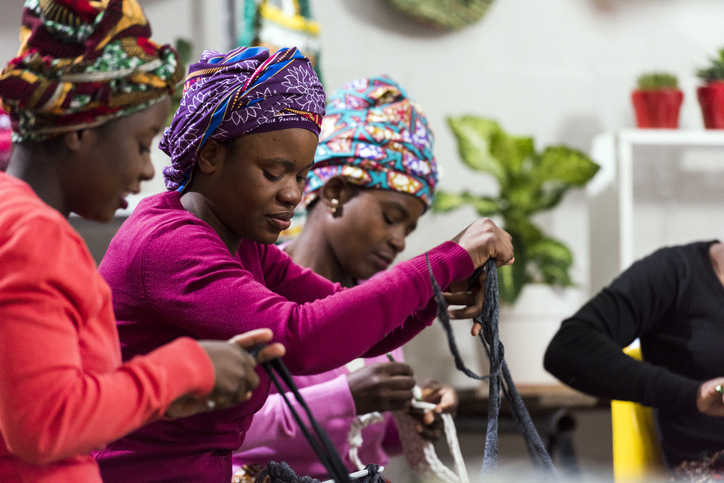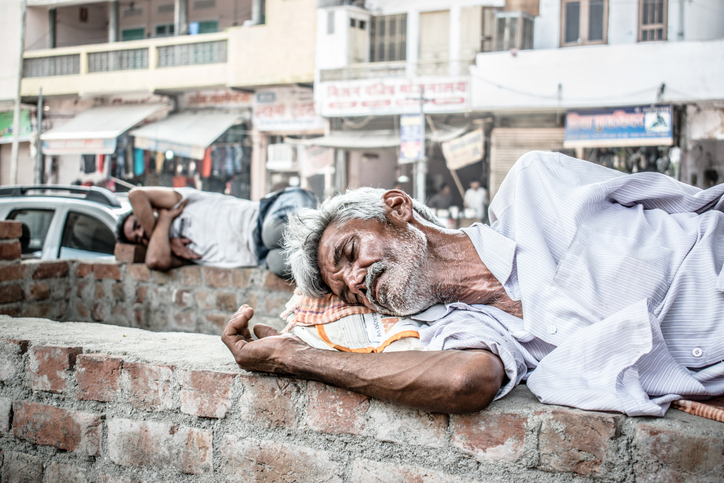In many countries, there remain local traditions that cause harm to children. This column uses child marriage as one prominent example to outline research evidence on this challenging issue, including the difficulty of changing social norms to end such harmful practices. The authors describe an intervention in Malawi that shows promising results.
In many countries, there remain local traditions that cause harm to children. Prominent examples include child marriage, female genital cutting, and adolescent initiation rituals. This column focuses on child marriage to discuss reasons for the persistence of traditions and characterizes interventions that may help to end such practices.
According to a recent UNICEF report, over 650 million women alive today married before they turned 18 years old. Despite rapidly declining child marriage rates in many parts of the world over the past decade, no region is on track to meet the Sustainable Development Goal of eliminating child marriage by 2030. Moreover, in countries like Malawi, child marriage rates have been stable at around 40% for over 30 years (see Figure 1).

Figure 1: Share of women in Malawi who married before age 18 (among those ever married)
Child marriage violates several human rights as it can severely compromise children’s development. Research shows that early marriage hinders education, that it is associated with early childbearing and complications during pregnancy and childbirth, and that it may be linked to social isolation. In response to those consequences, many governments, multilateral organizations, and NGOs have joined efforts to fight the practice.
Recent research has identified a host of economic drivers behind child marriages: above all, marriage market incentives and acute poverty. Depending on local bride price traditions, in which a groom’s family pays in cash or kind to the bride’s family as part of the marriage negotiations, the bride’s family may have incentives to invest more in their daughters’ education and delay marriages.
Moreover, poverty has been shown to be an important factor driving children into early marriage in the presence of bride prices, as economic shocks drive families into ‘selling daughters’. Having said that, while economic conditions in developing countries have largely improved over the last decades, traditions that harm children, such as child marriage, have been extremely persistent.
Another perspective on the persistence of child marriage is to examine it through the lens of social expectations: how would you feel if you were the only one not to conform to what everyone else expects you to do? Would your answer change if, in your community, relying on the support of others were critical for your livelihood?
Child marriage as a social norm
Longstanding traditional practices can be understood as social norms: clear standards of behavior to which community members are expected to conform, and when they do not conform, they are expected to experience social sanctions. These sanctions can take various forms: from peer pressure to public shaming to social exclusion. They may cause those sanctioned to be perceived as social outsiders.
In a recent study, we show that Malawian parents understand that failing to conform to local social norms about child marriage can hurt their social image. In villages with high prevalence of child marriage, parents who do not marry off their under-age daughters are perceived as being less altruistic, less reciprocal, and less trustworthy – while the opposite is true in villages where child marriage is rare.
Replacing social expectations
Following traditions, however, is not the only determinant of social image in Malawi. Figure 2 showcases the most important factors influencing one’s social image in the country. While 40% of respondents point out that following traditions is a key component of social image, an even higher share acknowledges that helping others positively contributes to social image.

Figure 2: Main determinants of social image in Malawi
Could facilitating the latter substitute for the former? That is the question we explore.
Promoting alternative behaviors among traditional societies is a challenging endeavor. Working together with over 400 local village chiefs, we set up public donation drives in some of those villages. Donation drives are meant to make helping others easier and more visible: in those villages, households could publicly donate two kilograms of maize to help the poorest households in their respective villages.
Half of participating villages were randomly assigned to those drives, while the other half was used as a control group to understand the causal effects of that alternative signal of social image on villagers’ perceptions and behavior.
The public donation drives were a big success. On average, drives collected 50 kilograms of maize in just five weeks. Even 16 months after the introduction of public donation drives, donations were still much more prevalent in those villages, and contributing households were more positively perceived than others.
Most importantly, after 16 months, in the villages randomly assigned to the public donation drives where child marriage was high-prevalence at baseline, those who were unwilling to marry off their under-age daughters were no longer perceived as less ‘pro-social’ than those who conformed to the local norm. This is in strong contrast to control villages, where the original pattern remained unchanged.
New signal, different behaviors
We then compare marriage rates of girls that were unmarried at the beginning of the study across villages assigned to public donation drives and the control group. In line with the fade-out of social image incentives, after 16 months, girls in villages with public donation drives were 30% less likely to be married. There were similar declines in early pregnancies and school dropouts – often associated with early marriages – and even in other traditions that harm children and are prevalent in some parts of Malawi, such as sexual initiation rituals.
Takeaways
Our study documents that social image concerns are a powerful driver behind the persistence of traditions that harm children. That same mechanism can be used to replace social expectations and quickly lead previous supporters to abandon the practice.
The findings suggest that social signaling mechanisms have high potential to discourage problematic traditions, such as child marriage, while simultaneously boosting positive behaviors. While implementing such interventions can be challenging, participatory programs sponsored by communities themselves can provide a good entry point for initiating behavioral change.
While there is no evidence that social capital in the villages deteriorated as a result of the intervention or that villagers became less helpful towards one another outside the public donation drive, engineering social norms could also lead to unwanted side effects by manipulating incentives to build social image in a variety of ways.







